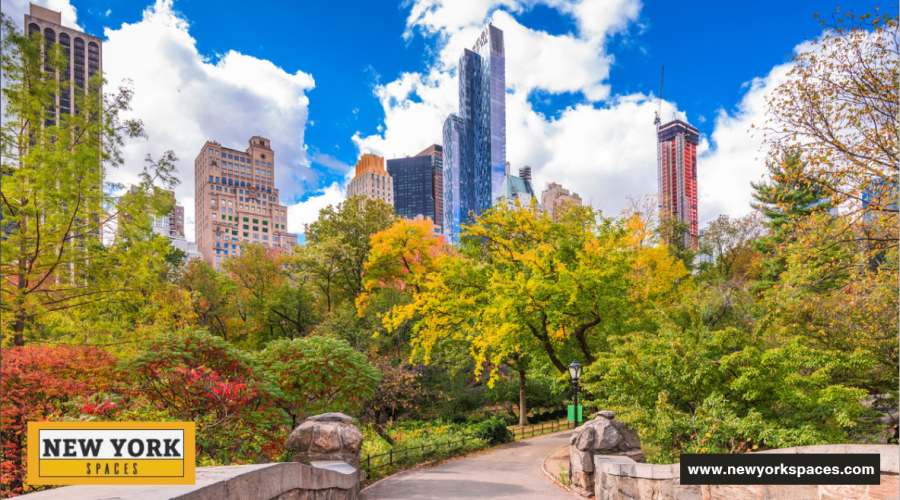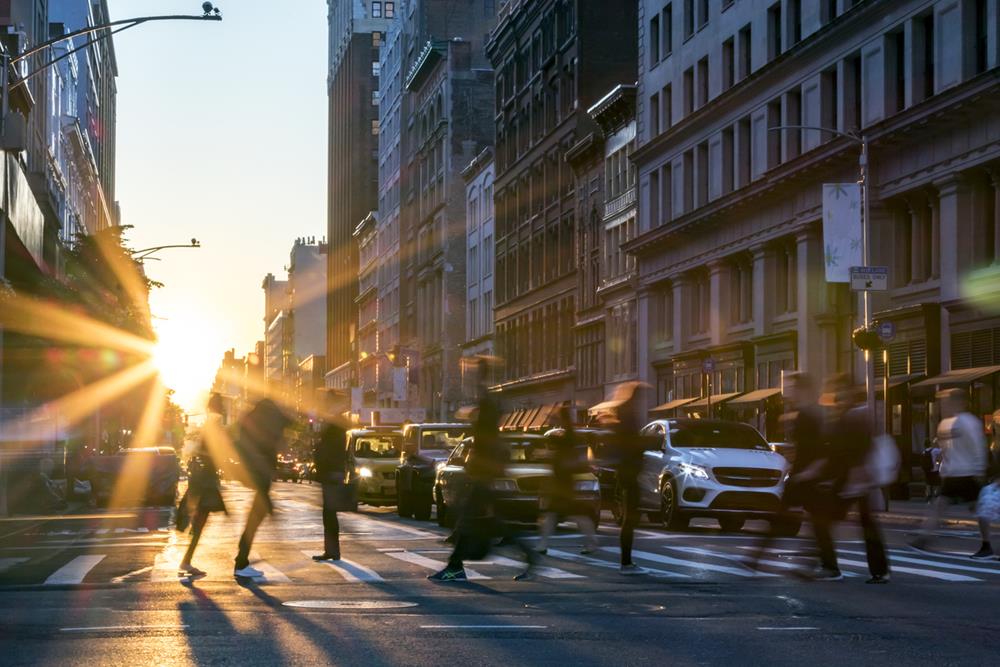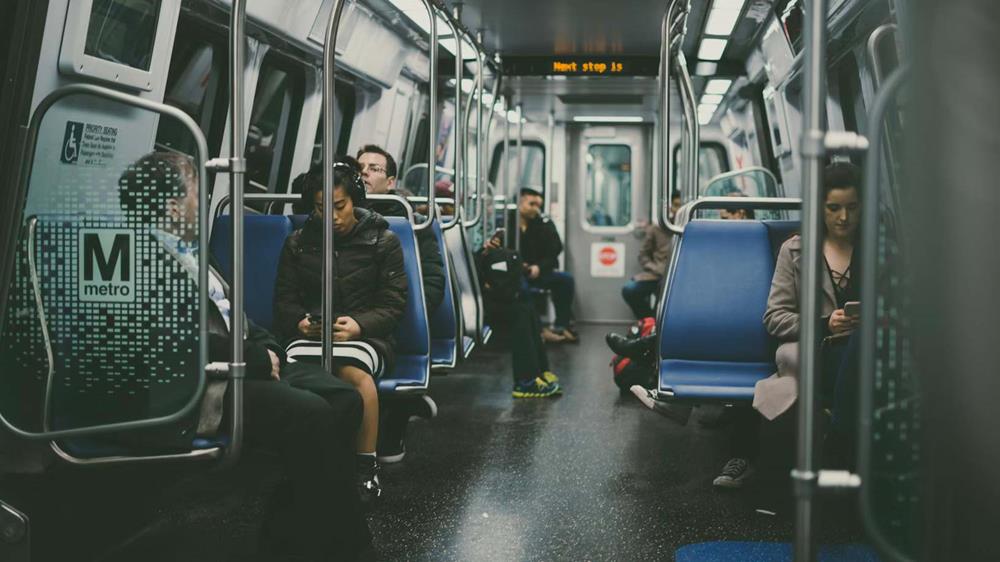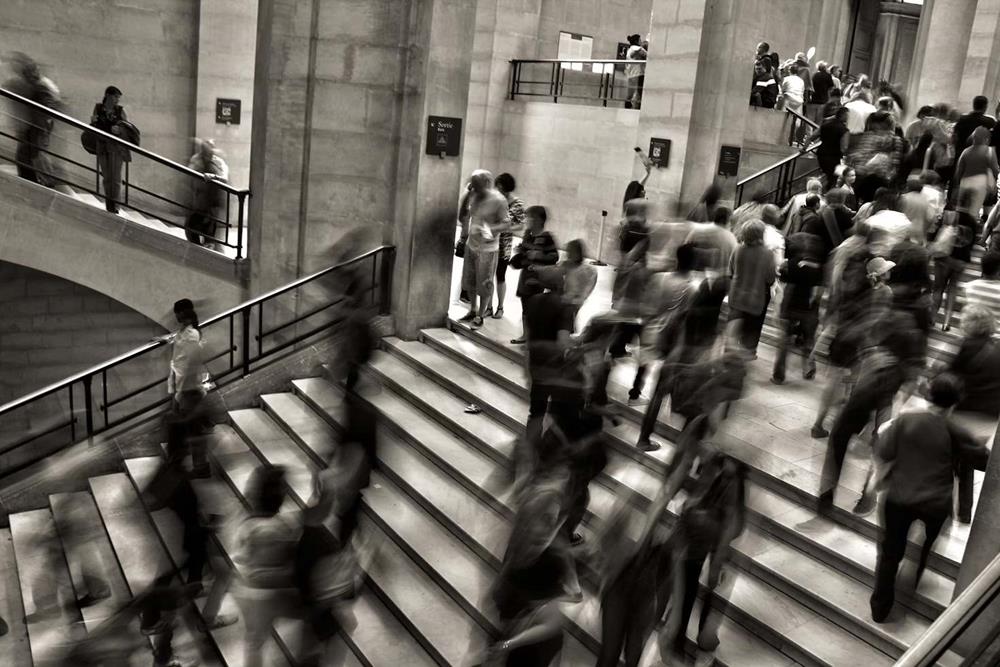Living in New York City, one of the most densely populated cities in the world, presents a unique set of challenges and adaptations when it comes to crowdedness and the lack of personal space. This bustling metropolis, renowned for its vibrant culture, towering skyscrapers, and bustling streets, also requires its residents to develop unique coping strategies to navigate the sea of humanity that defines their everyday lives. In this blog post, we’ll explore how New Yorkers deal with these challenges, focusing on their everyday lifestyles and living conditions.
Embracing Public Spaces
Embracing public spaces is a vital aspect of life in New York City, where private living spaces are often limited in size. The city’s parks, plazas, and waterfronts serve as communal living rooms, gyms, and gardens, offering residents the physical and psychological space that their apartments cannot provide. This shared urban landscape plays a crucial role in enhancing the quality of life for New Yorkers, providing a sense of freedom and connection to nature amidst the concrete and steel.
- Central Park: Central Park, an iconic 843-acre oasis, is often referred to as New York’s backyard. Designed by Frederick Law Olmsted and Calvert Vaux, it offers a diverse landscape of meadows, woodlands, lakes, and gardens. New Yorkers flock to Central Park for leisurely picnics, jogs, bike rides, and even remote work sessions under the shade of its expansive trees. The park’s Sheep Meadow, Great Lawn, and Bethesda Terrace are popular gathering spots, where the sense of community is palpable. Central Park serves not only as a recreational space but also as a cultural venue, hosting free concerts, theater productions, and other events that bring New Yorkers together.
- The High Line: The High Line is a prime example of innovative urban renewal, transforming a disused elevated railway into a 1.45-mile-long linear park. It winds through the West Side neighborhoods of the Meatpacking District, Chelsea, and Hudson Yards, offering unique views of the city and the Hudson River. The High Line is landscaped with a mix of wildflowers, grasses, and trees, and features art installations and public seating areas. It’s a place where residents can enjoy a leisurely walk, find inspiration in the urban landscape, and escape the hustle and bustle of the streets below.
- Community Gardens: Community gardens are scattered throughout the city, offering pockets of greenery where residents can engage in gardening, socialize with neighbors, and participate in community events. These small-scale gardens are often managed by local community groups, providing a personal connection to nature and a sense of ownership and pride. They serve as important social hubs, especially in densely populated neighborhoods where private gardens are a rarity.
- Waterfronts: New York’s waterfronts, including the Hudson River Park, Brooklyn Bridge Park, and the East River esplanade, offer expansive views and a sense of openness that is hard to find in the city’s interior. These areas are popular for walking, jogging, cycling, and kayaking, providing a refreshing contrast to the urban environment. Waterfront parks also host a variety of activities, from outdoor fitness classes to cultural festivals, making them vibrant centers of urban life.
- Plazas and Public Squares: New York’s plazas and public squares, such as Times Square, Union Square, and Bryant Park, function as urban meeting places where people from all walks of life come together. These spaces host a range of activities, from farmers’ markets and art fairs to open-air movie nights and yoga classes. They offer seating areas where people can relax, enjoy their lunch, or simply people-watch, turning these public spaces into communal living areas where social interactions flourish.
By embracing public spaces, New Yorkers effectively expand their living environments beyond the confines of their apartments. These shared spaces offer not only physical room to breathe but also opportunities for recreation, socialization, and cultural engagement. They are essential to the city’s social fabric, fostering a sense of community and belonging among its diverse population. In a city where private space is limited, public spaces become invaluable assets, enriching the lives of residents and making the urban experience more vibrant and fulfilling.
Timing Activities
Timing activities to sync with the less crowded intervals of New York City’s rhythm is a strategic approach adopted by many of its residents to enhance their daily lives. By understanding and adapting to the city’s pulse, New Yorkers can navigate its spaces more comfortably, minimizing the stress and discomfort associated with overcrowding. This temporal strategy touches upon various aspects of city life, from commuting and shopping to leisure and dining.
Off-Peak Transportation
New York’s public transportation system, while extensive and efficient, is notorious for its rush hour congestion. To avoid the packed subways and buses, savvy residents often adjust their schedules, commuting during off-peak hours when the flow of passengers is significantly lighter. This might involve starting the workday earlier or later than the standard hours, or taking advantage of flexible working arrangements to travel at times when trains and buses are less crowded. Off-peak commuting not only makes for a more pleasant journey but can also be faster and more reliable.
Strategic Shopping
Grocery shopping and running errands can be a daunting task when stores are crowded, leading to long lines and a chaotic environment. Many New Yorkers choose to shop during early mornings or late evenings on weekdays, or at times when they know their preferred stores tend to be quieter. Some even develop a keen sense of the best days of the week to visit certain shops or markets, ensuring a more relaxed and efficient shopping experience.
Leisure and Recreation
New York City is home to countless attractions, parks, museums, and entertainment venues, which can become extremely crowded during peak visiting hours. Residents who wish to enjoy these amenities without the throngs of tourists and locals learn to visit them at less popular times. Early mornings are ideal for a tranquil walk in Central Park or along the High Line, while late evenings offer quieter moments to appreciate the city’s skyline from popular spots like Brooklyn Bridge Park. Museums often have “pay-what-you-wish” hours or free admission days during less busy times, providing an opportunity for residents to enjoy culture and art without the crowds.
Dining Without the Wait
The culinary scene in New York is vibrant and diverse, but popular restaurants can have long wait times, especially during traditional dining hours. To circumvent this, some New Yorkers prefer dining at non-traditional times, such as having an early dinner before the evening rush or a late supper after the crowds have dwindled. This strategy not only reduces wait times but can also lead to a more relaxed and intimate dining experience.
Creating Personal Bubbles
In a city where physical space is often compromised, especially in public transportation or busy streets, the concept of a personal bubble goes beyond the physical to include psychological and emotional dimensions. This personal space acts as a buffer, helping individuals manage the sensory overload that can come with city living.
- Headphones: Headphones are perhaps the most ubiquitous tool for creating personal bubbles in NYC. They serve as a clear, unspoken signal to others that one is engaged in their own world, whether it’s listening to music, podcasts, or simply using them as a noise-cancelling barrier against the city’s cacophony. This auditory shield allows individuals to curate their own soundscapes, transforming a cramped subway car or a busy sidewalk into a more personal, manageable space.
- Books and Reading Devices: Books, e-readers, and other reading materials offer another avenue for New Yorkers to create personal bubbles. Immersing oneself in literature can provide an escape from the immediate surroundings, transporting the reader to different worlds and stories. This act of reading not only serves as a visual barrier, indicating to others that one is not open to unsolicited interactions, but also engages the mind in a way that further distances it from the hustle and bustle.
- Smartphones and Tablets: Smartphones and tablets are versatile tools in the arsenal of personal space creation. Beyond their communication functions, these devices can be gateways to a wide range of personal experiences, from watching movies and playing games to browsing the internet and engaging in social media. They offer a personalized digital environment that can make individuals feel less exposed and more in control of their interaction with their immediate physical surroundings.
- Wearable Technology: Wearable technology, such as smartwatches and fitness trackers, also contributes to the creation of personal bubbles. These devices allow individuals to stay connected and engaged with their personal interests and needs, without the more visible barrier that smartphones or books might create. They offer a more subtle way to remain ensconced in one’s personal bubble, even in crowded settings.
Through a combination of technology, literature, and psychological strategies, New Yorkers are able to carve out personal havens amidst the city’s constant activity. These personal bubbles not only provide a sense of comfort and control but also reflect the city’s broader culture of individuality and resilience in the face of urban challenges.
Seeking Out Quiet Corners
In the bustling metropolis of New York City, finding quiet corners becomes an essential respite for its residents, who seek solace in the less trodden neighborhoods, serene waterfronts, and the intimate greenery of small parks. These tranquil havens, coupled with the cozy ambiance of local cafes and the hushed, reverent halls of cultural institutions, offer a necessary escape from the city’s relentless pace. Such spots not only provide a peaceful backdrop for contemplation and rejuvenation but also underscore the city’s diverse character, revealing pockets of calm where one can momentarily step away from the urban rush and rediscover the quieter, more reflective aspects of city life.
Adopting a Positive Mindset
New Yorkers are known for their resilience and ability to adapt to the fast-paced lifestyle of the city. Part of this adaptability stems from adopting a positive mindset towards the city’s relentless energy and diversity. By focusing on the opportunities and experiences that New York offers, such as its cultural richness, the vibrancy of its neighborhoods, and the sheer variety of activities and social interactions available, residents can reframe challenges as part of the city’s allure. This positive outlook helps in not only accepting but also appreciating the complexities and nuances of urban life, making the hustle and bustle feel like an essential component of the city’s identity. Embracing the city’s dynamism with a positive mindset allows residents to thrive in an environment that might otherwise be overwhelming, turning potential stressors into sources of inspiration and motivation.
Practicing Mindfulness and Self-Care
Mindfulness and self-care have become crucial practices for New Yorkers navigating the pressures of city life. Engaging in activities that promote well-being, such as meditation and yoga, provides a mental and physical break from the constant stimuli of the urban environment. These practices encourage living in the present moment and developing a greater awareness of one’s thoughts and feelings, which can significantly reduce stress and anxiety. Beyond structured practices like yoga or meditation, simple acts of self-care, such as enjoying a favorite hobby, spending quality time with loved ones, or exploring a new part of the city, can also contribute to mental health and overall well-being. By prioritizing mindfulness and self-care, residents can cultivate a sense of inner peace and resilience, enabling them to navigate the city’s challenges with greater ease and balance.
Working Remotely or Off-Peak Hours
The rise of flexible work arrangements has fundamentally changed the way New Yorkers engage with their professional lives, providing an alternative to the traditional office-bound, 9-to-5 work schedule. This shift is largely driven by the increasing prevalence of remote work capabilities and the recognition of the benefits that flexibility offers both employers and employees. As a result, many in the city have embraced the opportunity to work from home or adjust their working hours to off-peak times, reaping several significant benefits.
- Avoiding Crowded Commutes: One of the most immediate advantages of working remotely or during off-peak hours is the ability to bypass the notoriously crowded New York City commutes. Rush hours in the city can be particularly stressful, with packed subways and buses, congested streets, and the overall rush contributing to a less-than-ideal start or end to the workday. By choosing to work from home, individuals can eliminate the commute altogether, saving time, reducing stress, and increasing their overall quality of life. For those who still prefer or need to work from an office, shifting work hours to less busy times can make the commute more pleasant and manageable, with less crowding and often quicker travel times.
- Enhanced Control Over Personal Space: Working remotely provides individuals with the autonomy to create and control their own work environment. In a city where personal space is at a premium, having the ability to set up a home office tailored to one’s personal preferences and needs is a significant benefit. This can lead to increased comfort, which in turn can boost productivity and job satisfaction. The flexibility to choose one’s own workspace also means the opportunity to work in environments that inspire creativity and focus, whether that’s a quiet corner of the home, a local library, or a favorite coffee shop.
- Flexibility and Work-Life Balance: The flexibility inherent in remote work and off-peak schedules allows for a better balance between professional responsibilities and personal life. Without the rigid constraints of traditional office hours, individuals can more easily attend to personal matters, engage in hobbies, and spend time with family and friends. This flexibility can lead to a more holistic approach to work, where professional responsibilities are integrated more seamlessly into daily life rather than dominating it. For many, this can lead to greater overall happiness and reduced burnout.
- Productivity Gains: Contrary to the belief that remote work might lead to decreased productivity, many find that the opposite is true. Without the distractions and interruptions common in traditional office environments, and without the fatigue that comes from long commutes, individuals often report being able to focus better and achieve more in less time. The ability to work during one’s own peak productivity hours, whether that’s early in the morning or later in the evening, further enhances this effect.
- Challenges and Solutions: While the benefits of remote work and flexible schedules are significant, they also come with their own set of challenges, such as the potential for isolation, difficulties in separating work from personal life, and the need for self-discipline and motivation. To combat these, New Yorkers have developed various strategies, such as setting clear boundaries between work and leisure time, creating structured daily routines, and making conscious efforts to stay connected with colleagues and professional networks.
The trend towards remote work and off-peak hours in New York City reflects a broader shift towards more flexible, autonomous, and balanced work arrangements. By leveraging technology and embracing the benefits of flexibility, New Yorkers are finding new ways to navigate the demands of professional life in one of the world’s most dynamic urban environments.
Conclusion
Living in New York City, with its inherent crowdedness and scarcity of personal space, requires resilience, creativity, and a deep love for the city’s unique energy. New Yorkers adapt to their environment by optimizing their living spaces, seeking out green areas, forming close-knit communities, mastering the city’s timing, respecting personal space in public, and finding solitude amidst the urban landscape. These strategies not only make the daily grind more manageable but also enrich the lives of residents, adding depth to the New York experience. It’s a testament to the human ability to adapt and thrive, turning challenges into opportunities for growth and connection.




